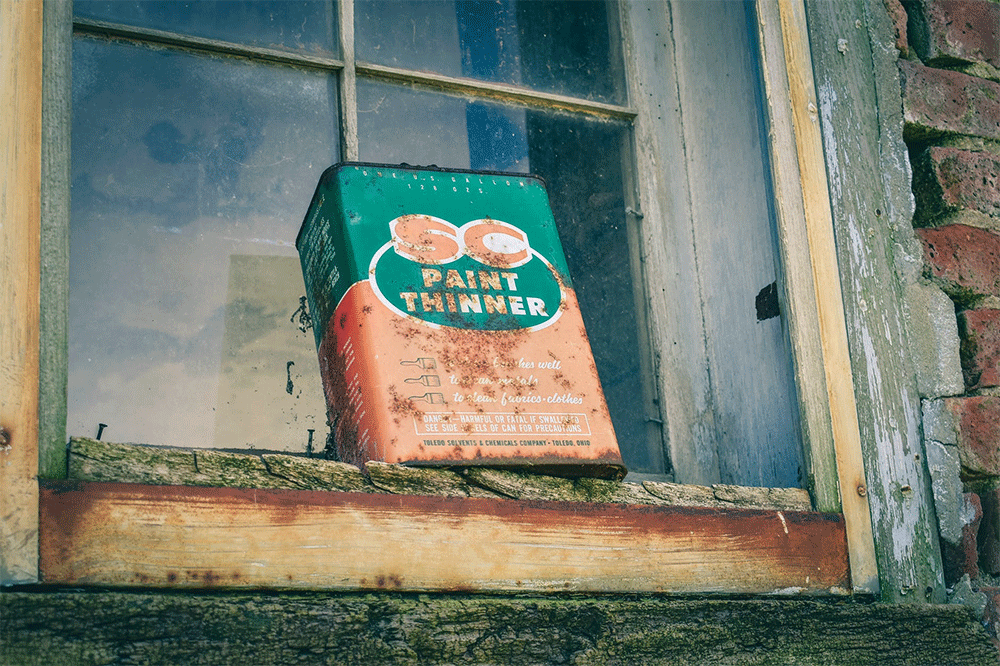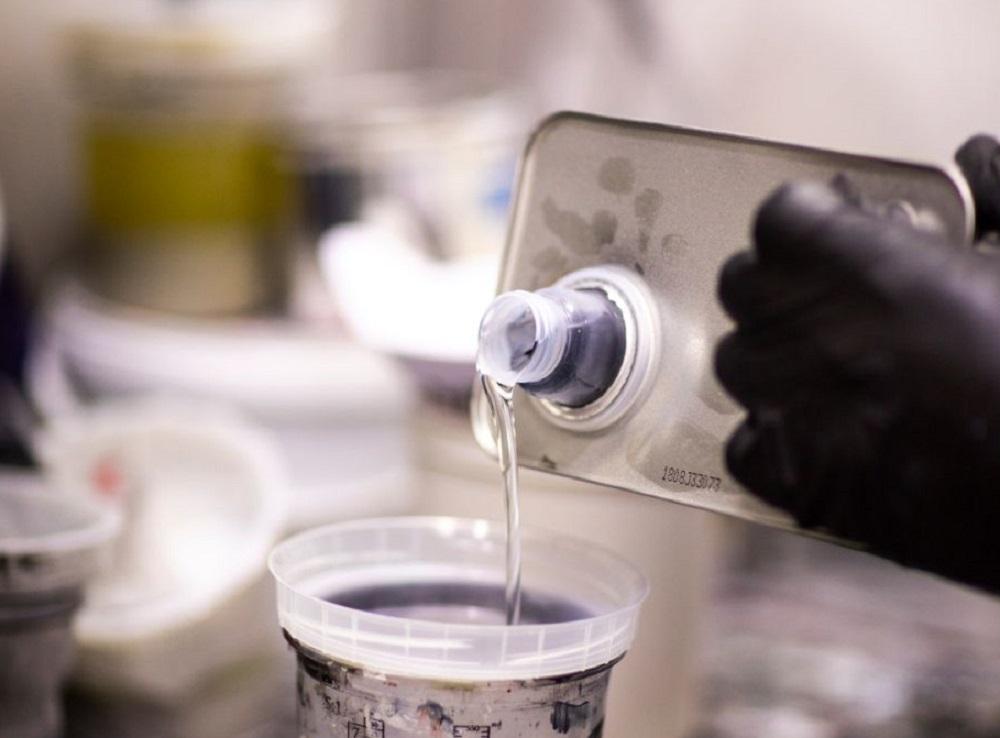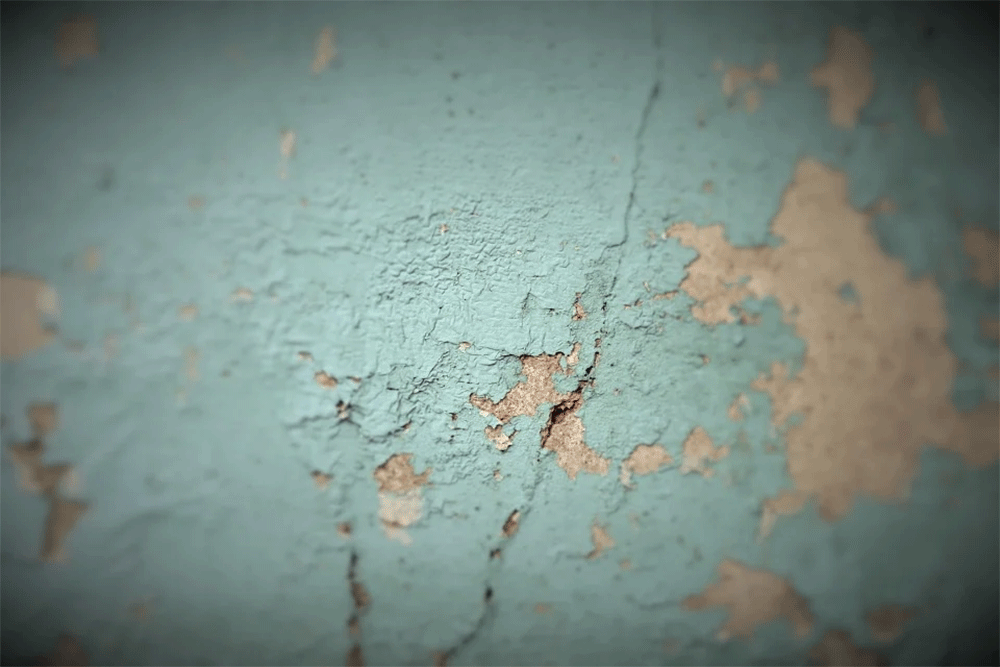ThatPainter is reader-supported. When you buy through links on our site, we may earn an affiliate commission. Learn More
Yes, although paint thinner can be found in most homes, the fumes it emits can be harmful to your health. If you breathe it in, it won’t only harm your lungs, but also your mucus membrane inside of your nose, throat, and mouth. The chemicals in some paint thinners can permanently damage these areas in less than a second, and they tend not to “grow back.”
You may also experience drowsiness or a sort of “high” that is short-lasting. This sensation is the body’s response to the chemical attacking your brain cells almost as quickly as they attack your mucus membrane. This has the potential to permanently damage your brain.

The airways and lungs are especially vulnerable to paint thinner poisoning. An inhaled hydrocarbon can be distributed in the lungs and cause inflammation to the lung tissue ranging from mild to very severe. Long-term inhalation of hydrocarbons may even lead to anemia or leukemia.
Paint thinners that contain methylene chloride can actually kill you, as they can spur on a heart attack. Methylene chloride turns into carbon monoxide in the body and can cut off the oxygen supply to the heart. At high doses the chemical switches off the breathing center of the victim’s brain.
Additionally, paint thinners that contain a mixture of volatile organic solvents have serious potential for solvent abuse. Solvent abuse-related deaths aren’t unheard of and usually occur very soon after exposure.
Short-term side effects:
- Hallucinations and delusions
- Impaired judgment
- Unconsciousness
- Severe headaches
Long-term side effects:
- Muscle weakness
- Disorientation
- Lack of coordination
- Irritability
- Depression
- Hearing loss
- Bone marrow damage
Does paint thinner evaporate?
Yes, it may not evaporate as quickly as alcohol or acetone, but paint thinner does evaporate. The majority of thinners evaporate quickly and release vapors into the air.
Always keep the can closed when not in use. Paint thinner should be stored in a cool, dry, well-ventilated area away from sources of ignition, pets, and children.
How long does it take paint thinner to evaporate?
As most paint thinners are highly volatile, they will evaporate. This is just a slow process, especially in comparison to acetone. The amount of time it takes paint thinner to evaporate depends entirely on the surface area.
For example, if it’s a spillage on the floor, it will evaporate quite quickly. But if it’s in a large container without a lid, it could take days or even weeks. Never store paint thinner in a food or beverage container where it might be mistaken for something edible.

Is it OK to pour paint thinner down the drain?
No, you should never pour paint thinner down the drain. It’s a toxic chemical that can harm the environment and wildlife by contaminating groundwater.
Due to its toxicity and flammable properties, it has to be disposed of in a careful and responsible manner.
Here’s how to dispose of dirty paint thinner correctly:
- Take any rags or towels that are soaked in paint thinner and put them in a metal container with a tight lid. Rags that are soaked with paint thinner have the potential to combust in the air, which can cause a huge fire. Fill the container with water and take it to your local hazardous waste disposal site.
- Instead of pouring your dirty paint thinner down the drain, leave it to sit and separate. You can soak tools and brushes beforehand. Be sure to label the jar of paint thinner clearly, so nobody consumes it. Over time, the paint and other contaminants will slowly sink and eventually settle at the bottom of your container. The length of time it takes for this separation to happen completely depends on how dirty the paint thinner is. It can take anywhere from a couple of days to several months.
- Once the dirt has completely settled at the bottom of your container, pour the clean top layer through multiple coffee filters into a clean glass jar. Be sure to leave a small gap at the top of the new jar and seal it tightly. Once again, be sure to label the container clearly to avoid accidental consumption. Also, be sure to always wear heavy rubber or nitrile gloves when handling paint thinner.
- Next, leave the container open and let it dry in a well-ventilated area. Add cat litter, sawdust, or sand to speed up drying. Keep this container out of the reach of pets and children, and away from heat, flame, and flammable materials.
- Once the material is solid and completely dry, wrap the paint thinner in newspaper, then seal in a plastic bag. You can now throw it away in the household trash. It’s important to note that many waste collection services will accept this, but there’s a chance yours requires you to bring this to a hazardous waste site. You can call yours to confirm this.
- Next, throw away all empty paint thinner containers. If there is still liquid inside, or a large amount of dried residue, take the container to a hazardous waste collection site. Most hazardous waste facilities will accept paint thinner in a sealed metal or glass container. Contact your local facility if you have a large amount of waste to dispose of.
Alternatively, if the paint thinner is clean and you just have an excess amount, you can give it away to someone who needs it. Offer it to a friend or post an ad online. If this gains no traction, you could try donating it to a local organization that could use it for renovation projects.
It’s best to try not to buy more paint thinner than you need in the future. If you run a business that uses a large number of hazardous materials, contract with a private collection agency to pick up your waste from the worksite.



